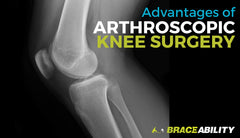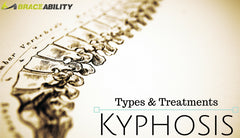Treating Sacroiliac Joint Pain – Is It Bad Enough I Need Fusion Surgery?
 Low back pain is an all-too-common occurrence among adults. In many cases, this stems from either too much or too little motion of the sacroiliac (SI) joint. Therefore, many individuals are is diagnosed with si joint dysfunction. The good news, however, is that there is no need for this to be a permanent ailment. There are a variety of conservative methods of achieving SI joint pain relief as well as some preventive practices you can engage into ward off a reoccurrence. And if all else fails, surgery is an option for permanent SI pain relief.
Low back pain is an all-too-common occurrence among adults. In many cases, this stems from either too much or too little motion of the sacroiliac (SI) joint. Therefore, many individuals are is diagnosed with si joint dysfunction. The good news, however, is that there is no need for this to be a permanent ailment. There are a variety of conservative methods of achieving SI joint pain relief as well as some preventive practices you can engage into ward off a reoccurrence. And if all else fails, surgery is an option for permanent SI pain relief.At-Home SI Joint Pain Treatment
The first step for SI joint pain management focuses on getting the painful inflammation associated with abnormal SI joint movement under control. This involves resting the lower back as much as possible.- SI belts: can be helpful for providing support and taking pressure off the sacroiliac joint.
- Avoid high impact activities: You should avoid activities that put high amounts of stress or impact on the lower back such as heavy lifting, twisting, or bending.
- Ice therapy: Apply ice for 15 to 20 minutes several times a day for anywhere from two days to two weeks can also be effective in reducing inflammation and thus providing sacroiliac pain relief.
- Heat therapy: Applying heat via a hot pad or taking a warm bath can also be helpful, though this should not be done only after the initial, most severe pain has eased. You can use this ice/heat therapy brace to easily apply both to make your recovery process hassle free!
- Anti-inflammatory medications: These can also be helpful for sacroiliac joint pain relief as they reduce the amount of swelling and inflammation that is occurring in your joints.
SI Joint Dysfunction Treatment Exercises
 You can also engage in SI joint exercises to strengthen the muscles of the lower back and abdomen, which enables them to lessen some of the strain on the SI joint. Such gentle, low-impact exercises are also ideal for stimulating blood flow through the SI joint, promoting healing. Typically, pilates or yoga are great practices for those who are suffering from pain in their si joint. Yoga poses not only help improve flexibility, but promote balance and strength as well!
You can also engage in SI joint exercises to strengthen the muscles of the lower back and abdomen, which enables them to lessen some of the strain on the SI joint. Such gentle, low-impact exercises are also ideal for stimulating blood flow through the SI joint, promoting healing. Typically, pilates or yoga are great practices for those who are suffering from pain in their si joint. Yoga poses not only help improve flexibility, but promote balance and strength as well!
In some instances working with a physical therapist may be necessary to help massage your joints. Those with severe pain may find water therapy to be an ideal type of treatment for sacroiliac joint pain due to the buoyancy properties of water that results in especially low amounts of stress being put on the lower back.
Those on the heavier side or are considered obese individuals may also find exercising at the gym, pool or otherwise helpful for shedding the excess pounds that can be a contributing factor to the development of sacroiliac joint pain.
Pregnancy also may be what is causing your si joint pain as most women experience this pain throughout their trimesters. Read more about why pregnant women are prone to si joint dysfunction and ways to treat it!
Sacroiliac Treatment Away from Home
Another method of treatment for SI joint pain is an injection (also known as si joint block) of a powerful anti-inflammatory medication, such as cortisone, into the region for SI joint relief. These injections also help your doctor diagnose your condition to determine how severe your si joint dysfunction is.
Radiofrequency ablation is sometimes successful for relieving SI joint pain. This involves “burning” the tiny nerves that give sensation to the SI joint via a needle known as a radiofrequency probe. Thus, this procedure essentially numbs the SI joint to the painful sensation. The sacroiliac joint pain relief is temporary in nature, though it can last up to two years, after which time the procedure can be done again.
Some also find chiropractic manipulation (from a professional, of course) to be a helpful form of treatment for sacroiliac joint pain. However, it should be noted that this is most helpful in instances of a joint that is stuck or allows for too little motion. For someone with a hypermobile SI joint, getting adjusted by a chiropractor can actually increase rather than decrease irritation.
Surgical Sacroiliac Pain Treatment
As is the case for most ailments, surgery is usually the course of last resort in terms of SI treatment. But there are rare cases when low-back pain is so severe and an individual is unresponsive to more conservative modes of treatment that necessitates surgery to relieve SI joint pain.
What is traditional SI joint fusion surgery?
This requires the surgeon to make a large incision and to spend several hours removing and grafting bones with the aim of fusing the bones of the SI joint into one in the hopes of eliminating SI joint pain. Following the procedure, you must spend several days in the hospital, followed by a lengthy rehabilitation period—usually in the ballpark of six months.
Is iFuse Implant System for SI joint pain a less invasive option?
Some surgeons do practice a less invasive form of SI fixation known as the iFuse Implant System, that offers the advantages of a shorter hospital stay and recovery period, but some believe there is a greater risk of a misaligned joint with this surgery type than with the traditional SI fusion procedure.
This type of surgery involves making significantly smaller incisions to insert several titanium implants to connect the spine to the pelvic bone, fusing the SI joint. Usually, just an overnight stay at the hospital is required and most can get back to daily activities within six weeks. Si joint fusion recovery also may involve wearing crutches to help keep weight off of your si joints and hips.
But surgery is never the preferred method of sacroiliac joint pain treatment as it is not always successful, not to mention there are always surgery risks, such as infection, the formation of scar tissue or vascular or nerve damage. We advise speaking with your doctor for all of the treatment options that are available for your specific condition!




